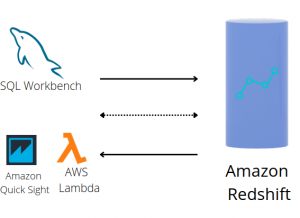Let’s take a closer look at the AWS redshift stored configuration procedure. We Bobcares resolve your every query and offers better solutions as a part of our AWS Support Service.
What is AWS stored procedure?
AWS Redshift has a specialized data warehouse that allows users to run unified analytics using a lakehouse architecture. Similarly, you can use real-time analytics and artificial intelligence or machine learning without re-architecture. This procedure is commonly used for data transformation, validation, and for business logic ways.
Benefits of Stored Procedures
The stored procedure is a user-defined routine saved in the database and can execute by other external applications. By this, you can easily reuse the same set of series. Using stored procedures has several benefits:
- Encapsulation: Encapsulation helps to sort the complex queries from your application into a few parameters so that you don’t have to spend the whole time proceeding with all queries.
- Accessibility: Users have permission to execute only stored procedures for retrieving or updating specific fields without giving full access to the user on tables.
- Maintainability: Ease way to manage stored procedures on the database than series of all application code.
- Data validation: Ensures that it only stores valid data and safeguards to save data.
The stored procedure contains the queries, operations, and logic that return useful information to the connected service.
Let’s take a few details to understand it better.
- The connected application does not require any predefined knowledge of the stored procedure rather than how to call them.
- You can just make changes to the stored procedures, need not create changes to the whole connected application service.
- We can update security and privileges to the stored procedures separate from connected service privileges

Redshift Stored Procedure Syntax
Initially, you can create a Redshift stored procedure using CREATE or REPLACE PROCEDURE command. The PL/pgSQL application provides a block-quoting mechanism, Basically, the stored producers are defined as a block or body or numerous lines of text.
For reference you can check the below syntax to create stored procedures in the Redshift database:
CREATE PROCEDURE sp_name ( [ [ argumentname ] [ argumentmode ] argumenttype [, ...] ] ) AS $$ procedure_body $$ LANGUAGE plpgsql ;
Below is a simple example of the stored procedure:
CREATE PROCEDURE redshift_example_sp() AS $$ BEGIN RAISE INFO 'This is an example of Redshift Stored Procedure'; END; $$ LANGUAGE plpgsql ;
Calling Stored Procedures
To execute the AWS stored procedure you can use the CALL command, which looks like this:
CALL procedure_name( <arguments> );
The calling procedure returns a temporary table that works similarly:
BEGIN; CALL table_cheaper_than(50, 'product_sheet'); SELECT * FROM product_sheet; END;
Further to execute AWS Redshift stored procedures use the CALL command as shown below:
dev=# call redshift_sample_sp(); INFO: This is sample Reshift Stored Procedure CALL
[Looking for a solution to another query? We are just a click away.]
Conclusion
To conclude, Creating a stored procedure in Amazon Redshift is efficient and effective when you have the requisite SQL or programming experience.
PREVENT YOUR SERVER FROM CRASHING!
Never again lose customers to poor server speed! Let us help you.
Our server experts will monitor & maintain your server 24/7 so that it remains lightning fast and secure.







0 Comments